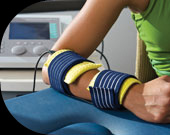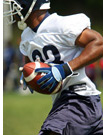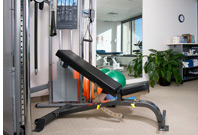Quality care for a healthy, active life
Make an appointment
514 397-2242
PHYSIO Bonaventure
800 de la Gauchetiere Ouest, Suite 8850
Montreal, Quebec H5A 1K6
Heels of Success*
By: Arièle Ali, pht
High heels are an integral part of just about every professional woman’s wardrobe. There is a certain aura that surrounds them since they increase one’s stature and can give any look that extra bit of polish and sophistication. Unfortunately, however, a long train of evidence exists which links the wearing of heels to problems such as poor posture, back pain and foot deformities.
High heels’ effects on the body
Altered Posture:
High heels push the centre of mass in the body forwards. This takes the spine out of alignment by increasing the curve in the lower back and can lead to back problems.
Increased pressure on the ball of the foot:
3 inch heels can increase the pressure on the ball of the foot by up to 75%. This can trigger the formation of calluses, joint pain in the ball of the foot (metatarsalgia), bunions, corns and deformity.
Knees & Ankles:
Stilettos make legs look longer but are also notorious for causing many an ankle sprain as well as knee injuries such as ligament sprains and even meniscal tears.
Muscle shortening/tightening:
Heels worn on a daily basis can lead to shortening of the calf muscles. When muscle flexibility and length are lost, the body may compensate by lowering the arch of the foot, which in turn may provoke stress and pain at the knee, hip and back.
Deformities:
Bunions, corns and hammertoes are but three of the most common deformities that can be caused by wearing high heels, especially those with narrow or pointed toe boxes.
High heels – How to wear them and still have healthy feet
Variety, variety: When it comes to footwear, variety is both foot-friendly and fashionable. Heel heights, widths, as well as the shape of the toe box should be varied. Ideally, heel heights of 4-5cm should be favoured for daily wear. Vertiginous heels and backless shoes are best saved for special occasions and limited to about 4 – 8 hours of wear.
Graceful movement: Stilettos change the way one walks – the pace slows, the stride shortens and the hips sway. Such footwear calls for elegant gliding. If one is going to be running around in order to catch buses and trains, low heeled shoes are to be preferred - a pair of high heels can be easily stashed in one’s bag or kept at work for later.
Get the right fit: Feet are subjected to enormous stresses on a daily basis. No matter the type or style of shoe worn, it is important to ensure that it fits properly. The following are a few bits of advice to keep in mind when shopping for shoes:
- Shoe sizes, like clothing sizes, vary according to brand and style. Never assume that, because you typically wear a size 7 shoe, you will always wear a 7 shoe. Feet can also change over time and with age, wider shoes may be required.
- One should always try on shoes (both sides) and walk in them on a hard surface to test for comfort before buying.
- Feet tend to swell as the day progresses, making it best to shop for shoes later in the day.
- There should be ample room in the toe box to allow for wiggling of the toes. Approximately 1cm of space between the longest toe and the front of the shoe is usually sufficient.
- Most people have one foot that is slightly larger than the other – the appropriate shoe size is the one that fits the larger foot best
- To get the best fit when shopping for athletic shoes, these should always be tried on while wearing appropriate socks.
Proper foot care, correctly fitting shoes and remembering to vary one’s footwear choices will ensure that any heel height can be worn while still maintaining healthy feet.
*Originally published in French in the Spring 2010 edition of Premières en Affaires.



